Once again, I resume the tale of our trip to Ecuador and Peru from late February to late March, 2011. Sorry for the slowness, and the long absence from blogging about other topics. My new book (you can see the link at right) “Ten Years That Shook the City: San Francisco 1968-78” came out and we’ve been super busy with it since the beginning of June, including having put up a 24-stop self-guided audio walking tour that you can follow online if you like. After this entry on Arequipa, I’ll have another on Lima and finally will reconnect to books, San Francisco, politics, and the usual gamut of topics.
We arrived in Arequipa around 11 p.m. after riding buses all day from Cuzco. It sits in a gently sloping valley and at night the place is all lit up, the urban area stretching for huge distances in every direction. We didn’t realize that Arequipa was so big, even though we’d read it was Peru’s 2nd largest city.
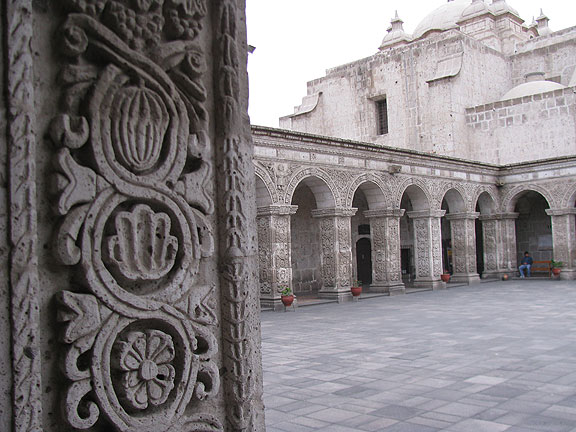
In the center of Arequipa, a colonial city with incredible architecture, there are dozens of these 17th century courtyards that have been converted to shopping centers. Still, really beautiful!
We were pretty tired after the four days on the Inca Trail, and the 14 hours on the bus from Cuzco, so we took it slow and started by finding a great restaurant near our hotel to enjoy some famously great eating.
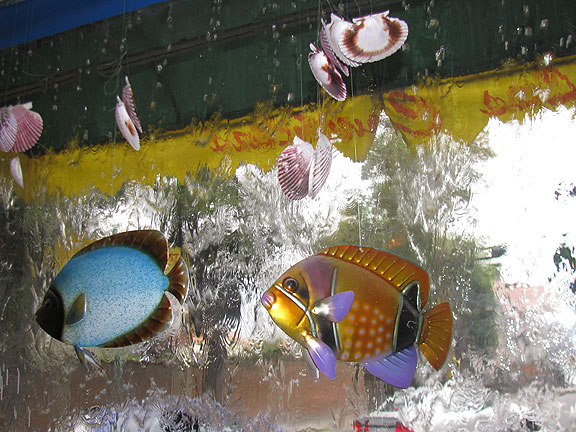
These toy fish hovered above us as we ate exotic seafood, the conceit of the restaurant to send water over the window while we dined to make it feel as though we were in an aquarium.
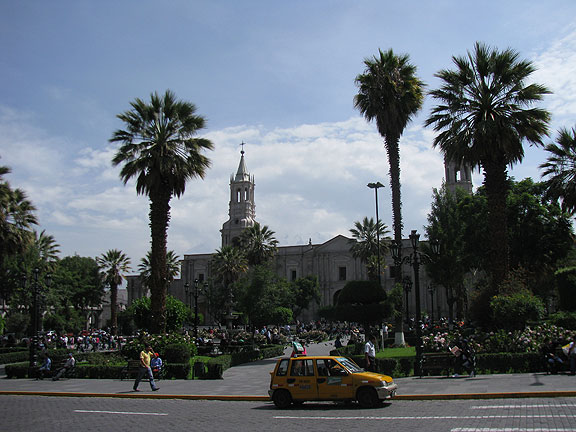
The central plaza in Arequipa, which is ringed with volcanoes but we couldn't see them until our last day in town, as they stayed in the clouds the whole time.
Arequipa is a beautiful old city, but has some forward thinking going on too. Several areas are designated for pedestrians only.
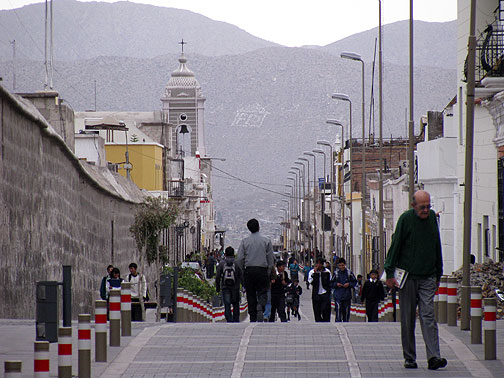
Calle Bolivar Sucre is a big boulevard that has been redesigned quite recently to be pedestrian and bikes only.
As it turns out, they really need to restrict car access for people on foot or on bikes to have any hope of getting across the streets. We stood for about 6 minutes in the middle of a crazy street scene across from a museum of alpaca wool.
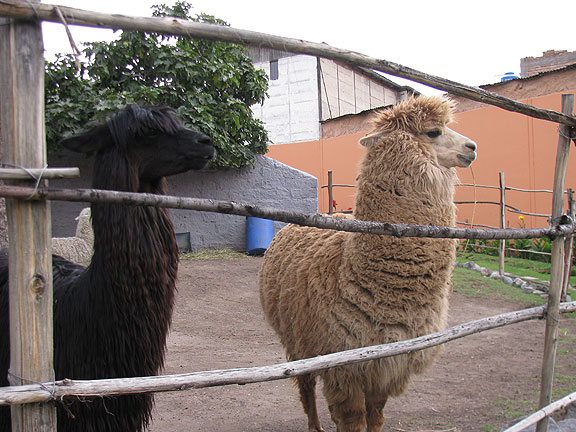
Llamas and Alpacas and Vicunyas, all in the camel family, were on display at this gallery and museum of natural wool.
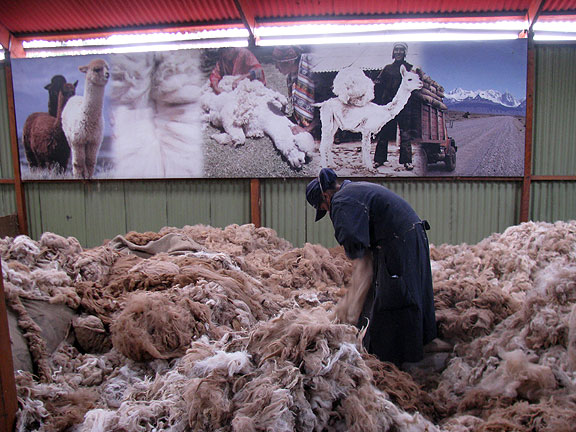
Interesting place because behind the fancy, expensive garment shop was an actual museum with people working with raw and finished wool.
The most famous tourist site in Arequipa is the sprawling Convent of Santa Catalina. It was founded in 1580 and was a place that wealthy families would stash their daughters, with ample dowries included. Apparently the women managed to maintain a high standard of living in the convent, with servants and even slaves, along with music, parties and more, for a couple of hundred years. Eventually a new reverend mother was put in charge and she cleaned the place up and ended the long practice of comfy living. It’s a gorgeous place, like a small town inside its walls near the city center, covering a dozen square blocks or so. We loved the visuals we found walking around in it.
After wandering around a bunch in the city center, we took a day to head off in a different direction and came upon one of our favorites, a big market. We spent an hour perusing the goodies and Adriana chatting up the various vendors, from olives, to fish, pork sandwiches, bread, and even hats!
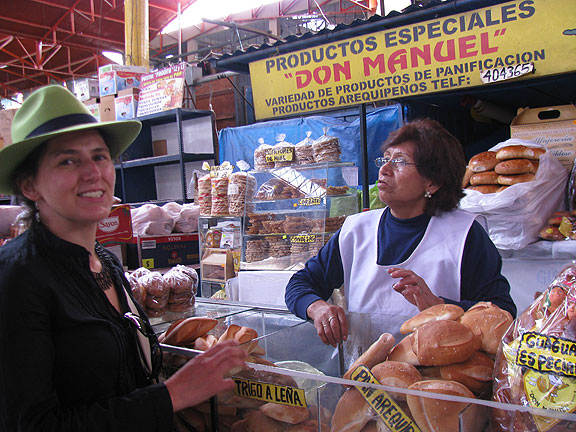
Adri chats it up with the bread lady, who was a huge fan of Mexico! (It turned out a lot of Peruvians were fond of Mexico and felt a real affinity.)
Finally on our last day in Arequipa, we got to see the volcanoes. We also found this poster on the wall, apparently protesting some local toxic waste dump.

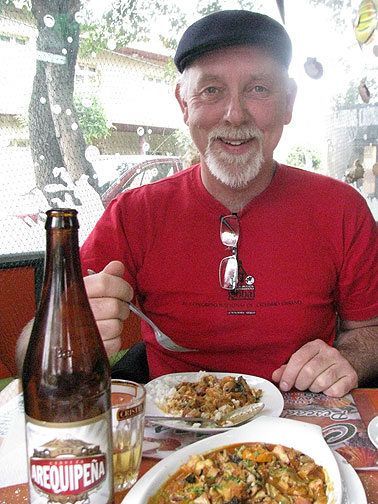
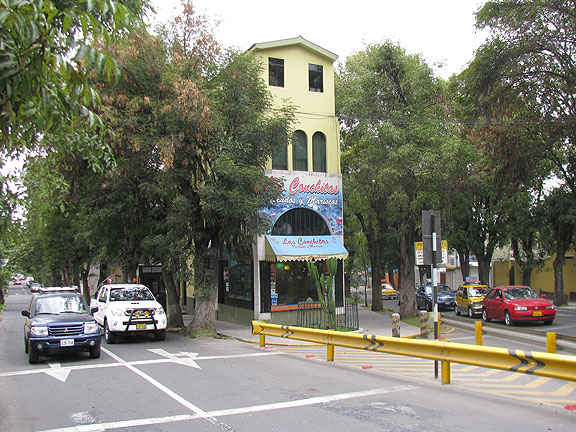
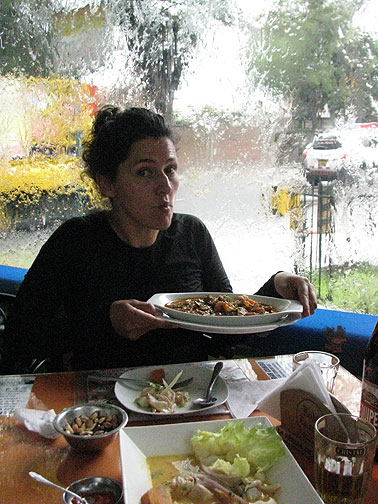
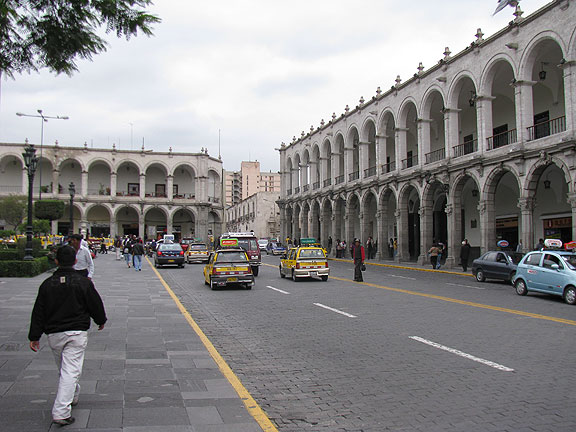
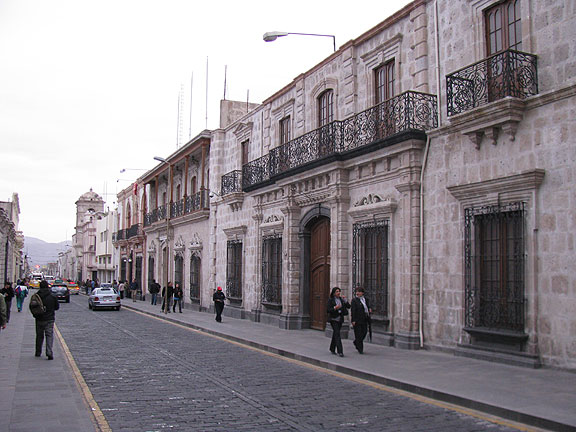
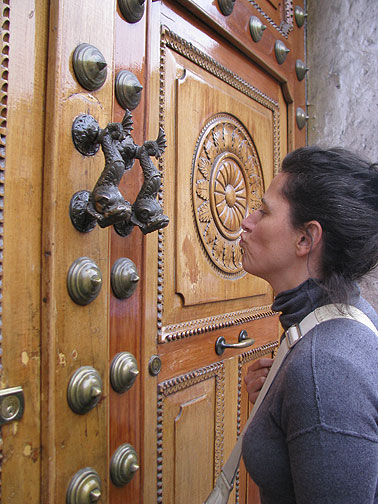
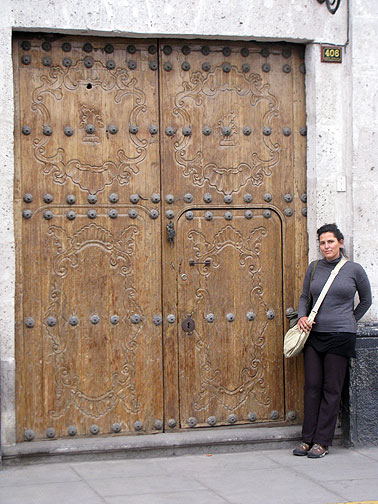
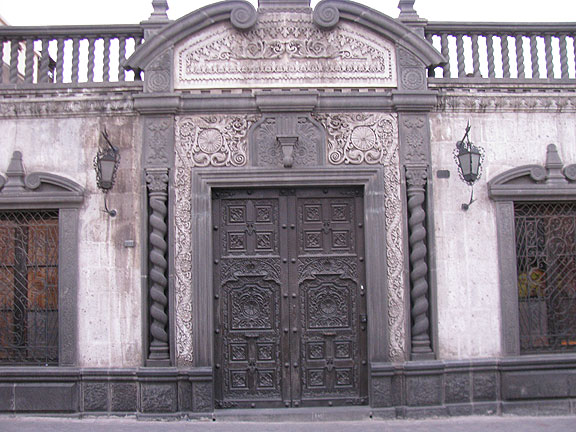
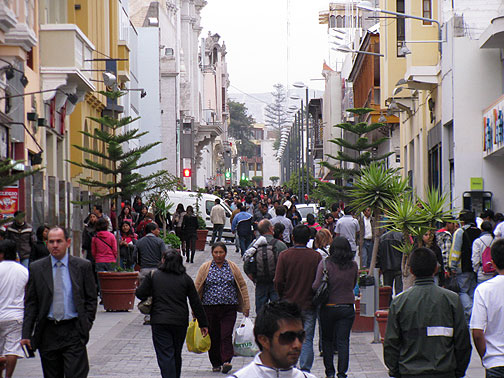
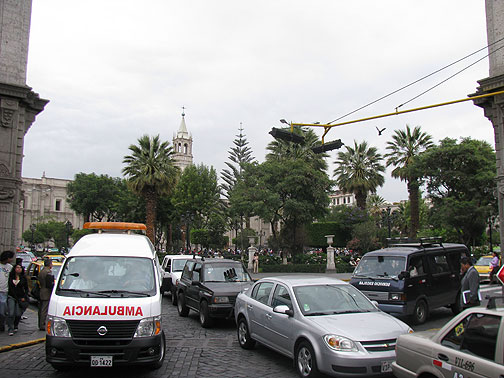
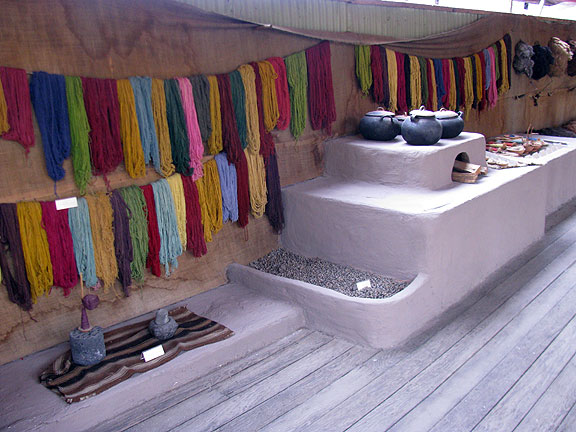
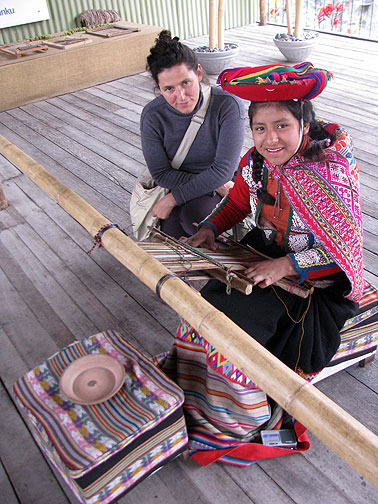
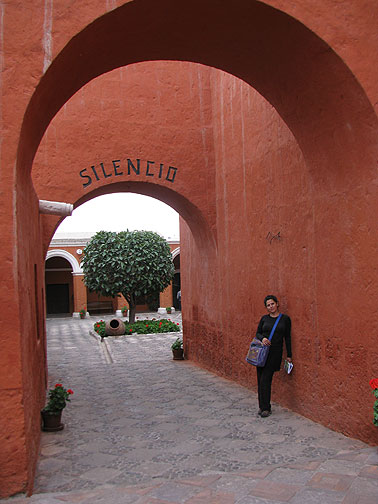
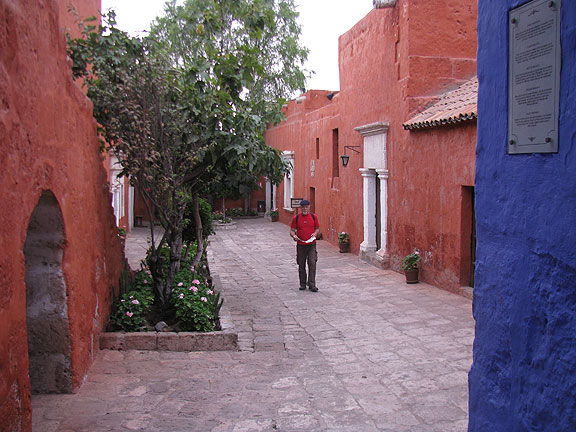
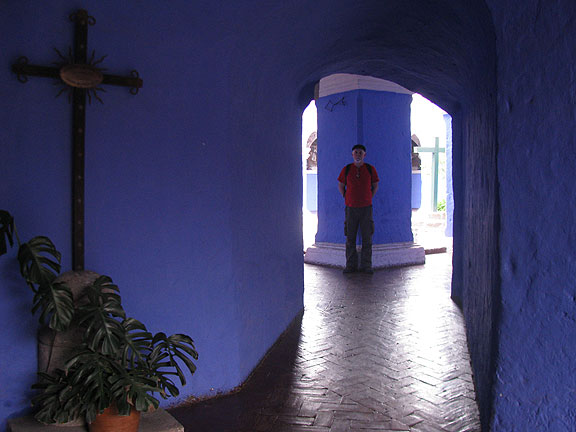
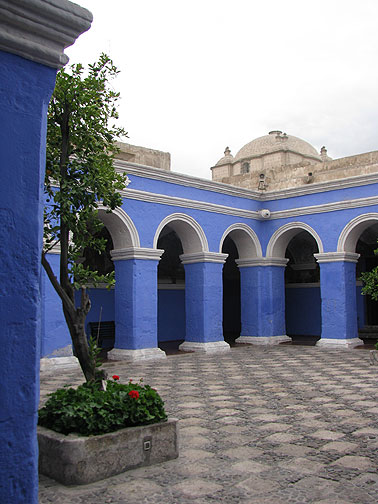
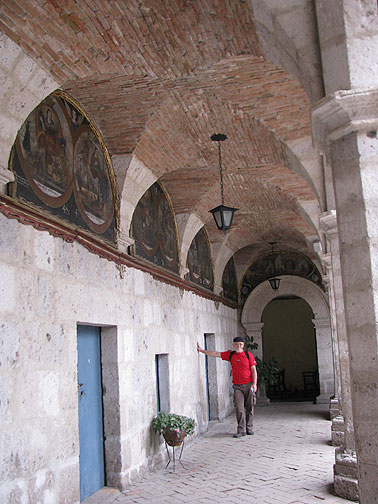
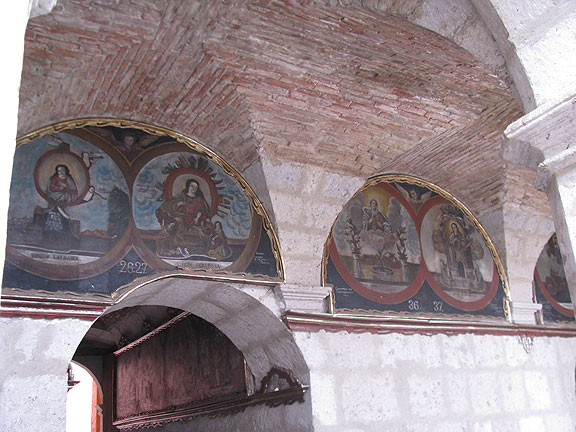
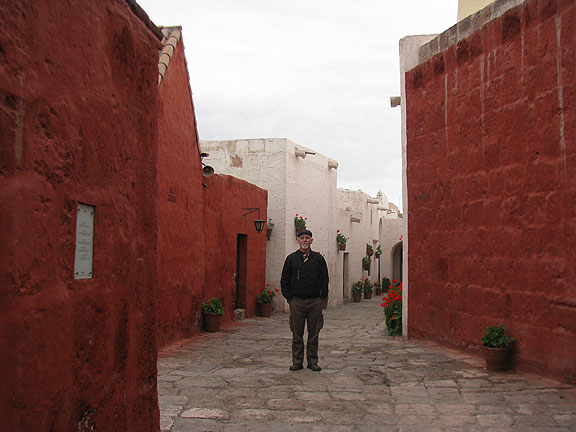
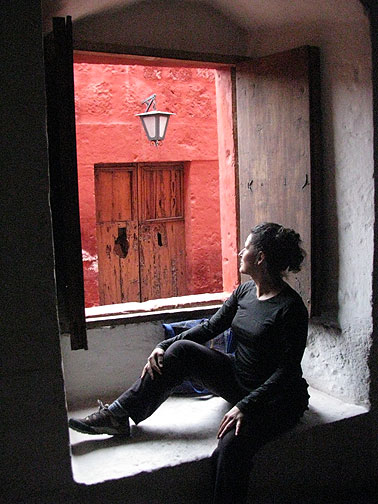
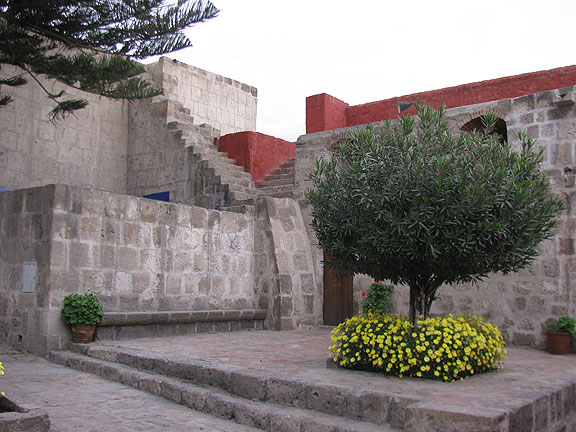
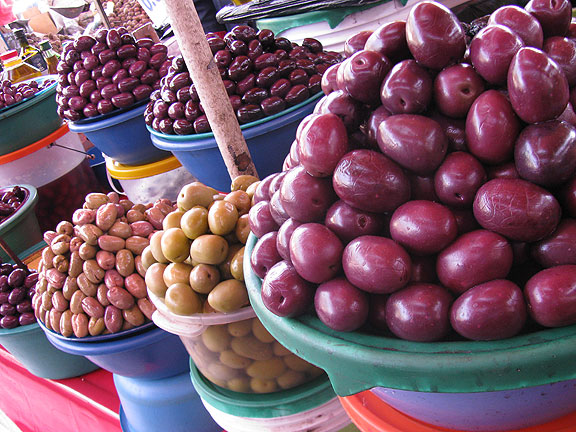
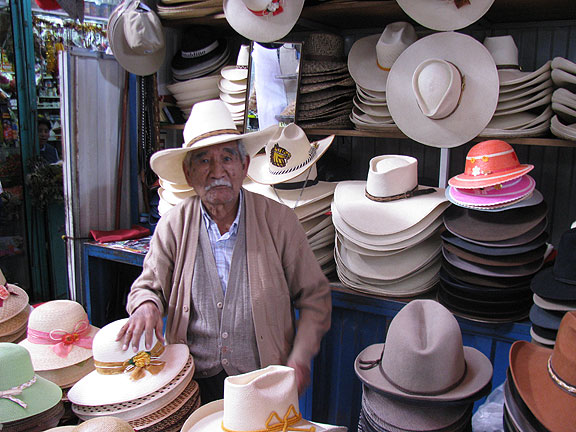
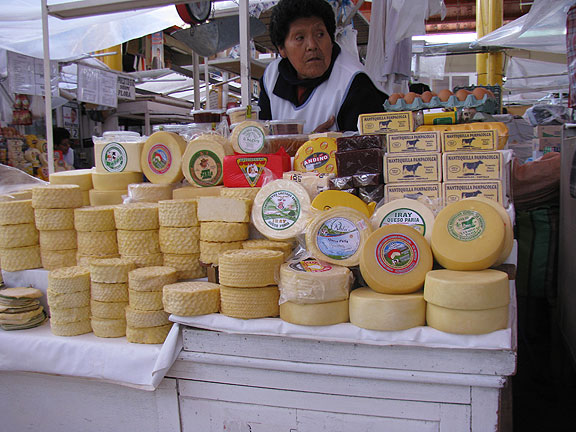
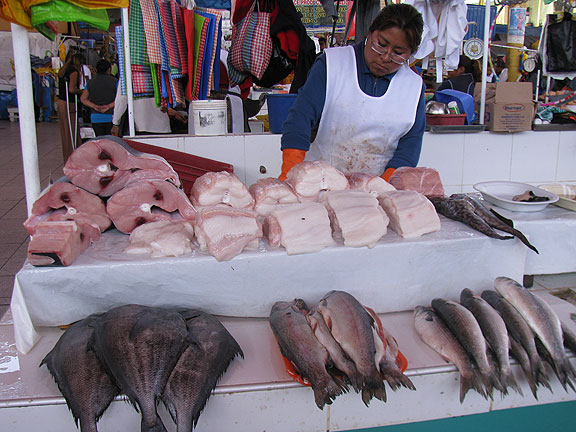
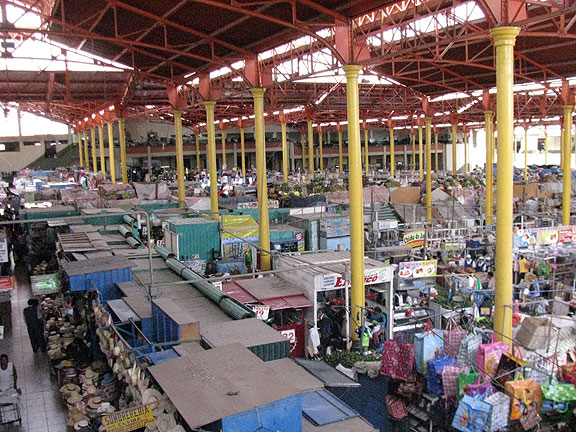
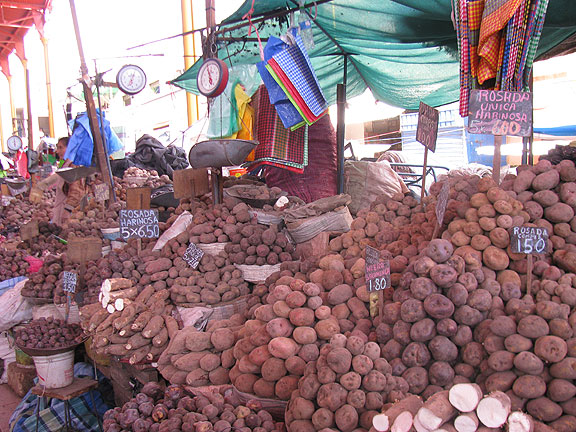
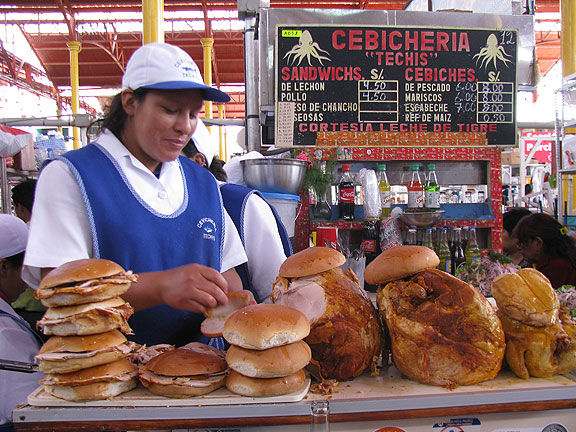
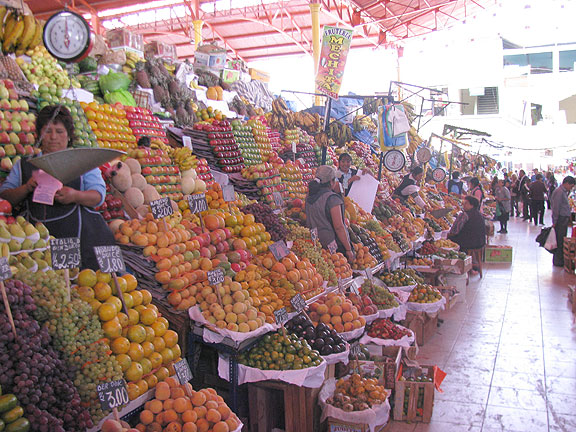
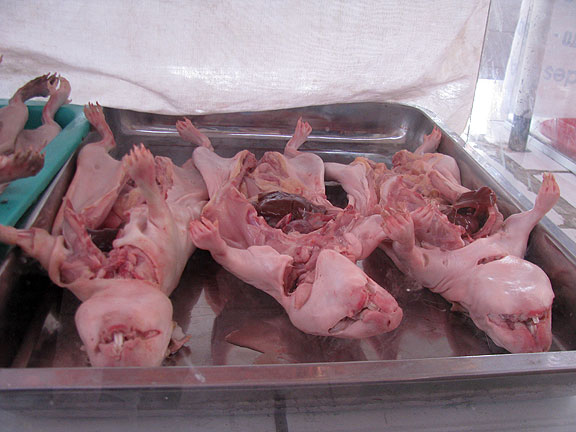
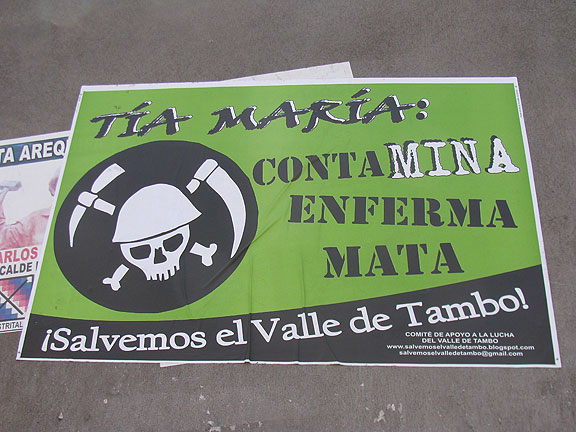
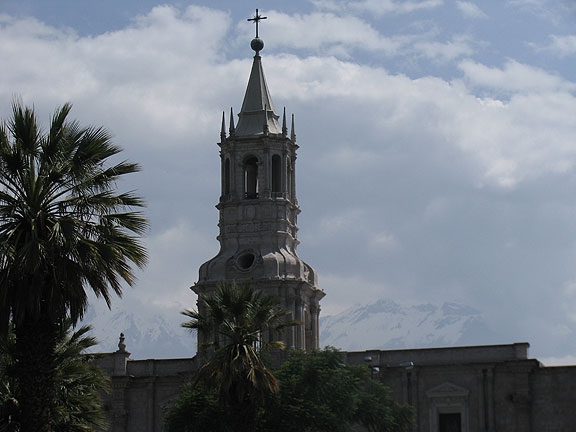
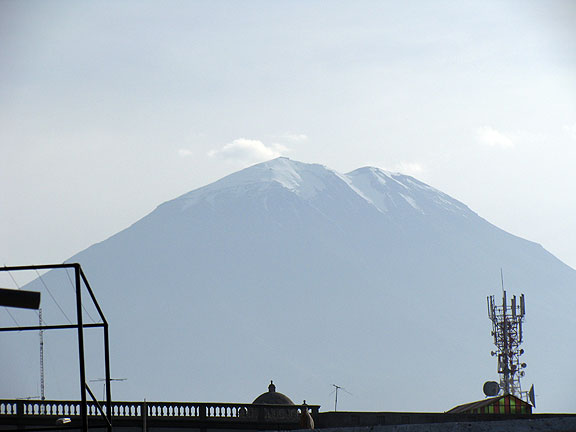











Leave a Reply